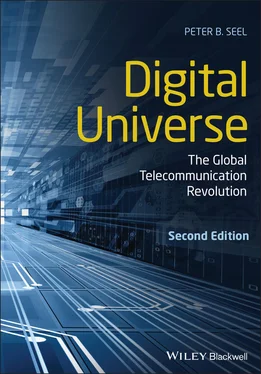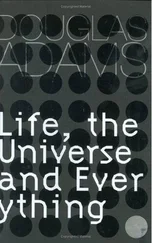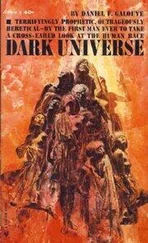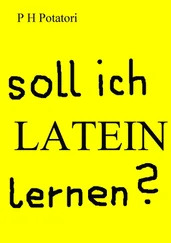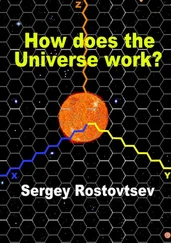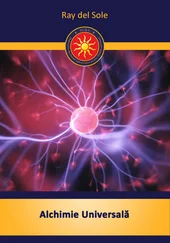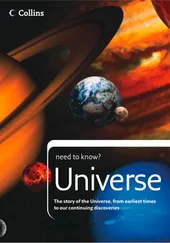Part III ends with Chapter 9on digital convergence in the shift from analog to digital media. The benefits of media convergence are examined along with its negative effects on existing media such as newspapers and radio-television broadcasting.
Part IV begins with Chapter 10’s focus on the battles over public and private control of the internet. The role of e-commerce is studied in the context of this struggle for control over the past 20 years. In Chapter 11we examine global cyberculture and the role of digital telecommunication in fostering this new culture. The perspectives of media critic Marshall McLuhan are examined in light of what he called the electronically connected “global village.” Digital divide issues are studied in terms of disparities in access to these digital services in various parts of the world. The emergence of global social networks is an outgrowth of the bonds formed by early pioneers on the internet that transcended space and time. However, there are attempts by some governments to limit free access to the internet and these are examined in the context of national priorities that promote censorship and the construction of intentional barriers to the free flow of information. Chapter 12deals with the “dark side” of the internet. It examines online privacy issues and the threats to personal privacy and data security posed by hackers, surveillance, and facial recognition.
The final section – Part V – is focused on the evolution of new telecommunication and digital technologies that will affect global societies in the coming decades. Chapter 13explores the topics of artificial intelligence and machine learning and how they will affect telecommunication in the latter part of the twenty-first century. The proliferation of AI-enhanced smart devices and the Internet of Things will be examined from a telecommunication perspective. Chapter 14examines the creation of virtual worlds that humans can inhabit through participation in online games. Digital games have come of age in the past two decades and have achieved a remarkable level of realism that makes active participation compelling. The chapter will also examine new applications of immersive augmented realities that superimpose computer-generated images over related scenes in the material world. The book concludes with Chapter 15which provides several perspectives on the future of the digital universe. The immediate future is bright as Moore’s law drives down the cost of digital tools while greatly improving their power and our access to them. As the digital divide shrinks, more humans will have access to these tools to connect and work with others. Some future scenarios are utopian – that humans will co-evolve with technology and adopt the best aspects of artificial intelligence and memory. Others are dystopian – that machine intelligence will eventually surpass that of humans and our role in the future may be that of maintenance staff for the robotic world. The reality will likely be somewhere between these polar visions. Why spend time thinking about these futures? Each of you will spend your lifetime living there, so giving some critical thought to these scenarios may be instructive. I hope you enjoy this journey through the digital universe as a virtual road map for connected life in the decades ahead.
A Few Closing Thoughts about Cybernetics
An essential element of digital literacy is deciphering the source of key terms related to information and communication technology. The archaic meaning of “communication” was to literally hand a message from person to person, as would a messenger in ancient Greece. One might think that “broadcasting” applies only to radio and television, when its etymology is derived from an agrarian term meaning “to sow.” Before the invention of mechanical planting machines, farmers would walk through their fields and “broadcast” the seeds for a new crop by scattering them by hand. Today electronic messages are “scattered” through society through the air by phone, radio, and television and via fiber-optic cables on land and under the sea.
Another key term for the digitally literate is “cybernetic.” It is derived from the Greek term “kybernetes” meaning a pilot, steersman, or governor. 15The root “cyber” has been embedded into many commonly used terms involving information and communication technologies such as “cyberspace” (e.g. the digital universe), “cyberpunk” as a style of post-modern literature, and “cyborg” to describe a bionic blend of human and machine. A new favorite cyber-term is “cyberbole,” coined in 2002 by Steve Woolgar, which is used to describe the myths or exaggerations made about the positive attributes of new digital technologies. 16A key focus in this book is to limit cyberbole by carefully examining the positive and negative attributes of technologies in what is termed the Tao of Technology .
Cybernetics involves feedback mechanisms providing command and control functions in closed systems. Cybernetic perspectives assist in understanding complex systems that include circular causal chains that make up feedback loops, which regulate the functioning of a system. All humans rely on cybernetic feedback loops in our bodies to manage vital functions such as respiration and blood circulation – and especially for communication with others. The study of cybernetics applies to many diverse disciplines, but the focus in this text is on its relevance to information and communication systems. We learn how to acquire new digital knowledge and skills through elaborate feedback loops with friends and family and with formal instruction. You try your hand at taking digital photos and then sharing them online with friends. You receive useful feedback about your photographs and modify your image acquisition and processing skills accordingly. In a Web 4.0 universe, the feedback loops may be immediate and personal (“I don’t like my picture taken at the party last weekend – please delete it”) or it may be distant and more impersonal (bidding on a digital camera on eBay). These interactive mechanisms are at the heart of user-generated websites such as Wikipedia. With social networking and other Web 4.0 tools, you can expand your feedback options and use them to acquire new knowledge and skills, especially those concerned with new telecommunication technologies. This text provides the background needed to understand the evolution of these technologies and then encourages you to think critically about how they affect human life today and in the future.
1 1.Kelly, K. (2005, August). We are the Web. Wired. Retrieved from, https://www.wired.com/2005/08/tech.
2 2.Ibid.
3 3.See the table on mobile phone iterations in Chapter 8on Wired and Wireless Technologies.
4 4.Thompson, C. (2018, September 18). The Dawn of Twitter and the Age of Awareness. Wired. Retrieved from, https://www.wired.com/story/wired25-clive-thompson-twitter-age-of-awareness.
5 5.The author has a Twitter account @profpete, but I use it primarily to follow technical experts such as Vinton Cerf and Clive Thompson on the site.
6 6.Thompson, Op. cit.
7 7.Ibid.
8 8.Ibid.
9 9.Harper, J. (2020, December 13). 68% of Republicans say the election was stolen from Trump. The Washington Times. Retrieved from, https://www.washingtontimes.com/news/2020/dec/13/68-of-republicans-say-the-election-was-stolen-from.
10 10.Barry, D., & Frenkel, S. (2021, January 6). Be there, will be wild. The New York Times. Retrieved from, https://www.nytimes.com/2021/01/06/us/politics/capitol-mob-trump-supporters.html.
11 11.Haberman, M. (2021, January 10). Stripped of Twitter, Trump faces a new challenge: How to command attention. The New York Times. Retrieved from, https://www.nytimes.com/2021/01/10/us/politics/trump-twitter.html.
Читать дальше
